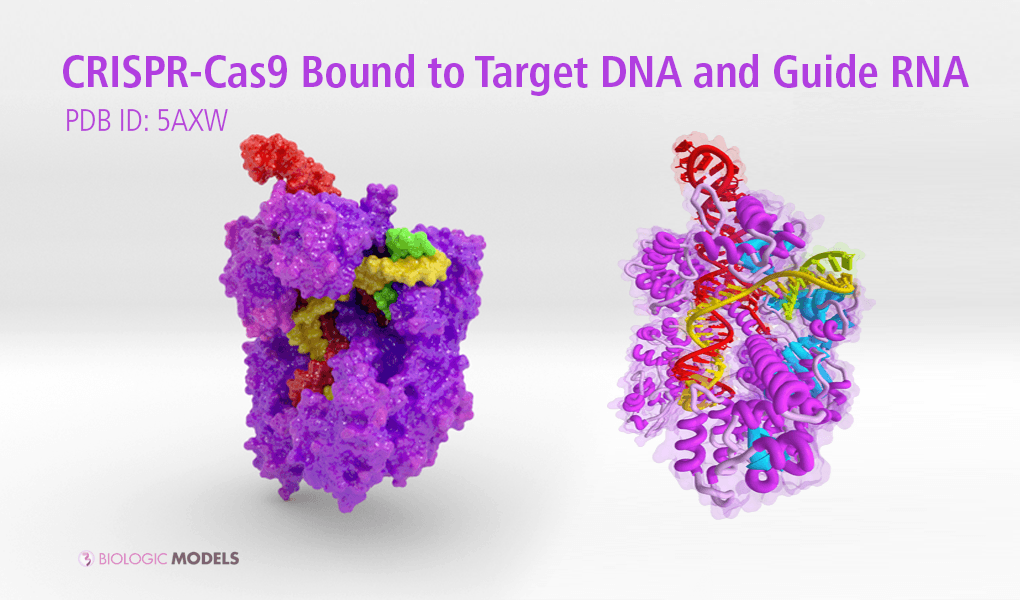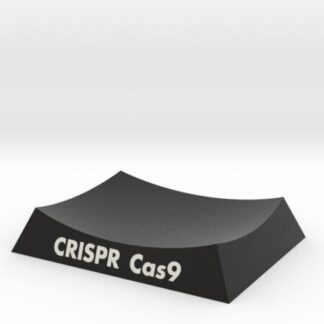CRISPR-Cas9 Bound to Guide RNA and Target DNA
This is a 3D print of CRISPR Ca9 is created in full-color sandstone. The model depicts CRISPR (purple) bound to its guide RNA (red) while editing its Target DNA (yellow and green). The subtle color variations in the CRISPR are associated with its bFactor, or atomic temperature. The darker the color, the less the protein moves with a cooler atomic temperature.
CRISPR Cas-9
The CRISPR-Cas9 system is a prokaryotic immune system that confers resistance to foreign genetic elements such as those present within plasmids and phages that provides a form of acquired immunity. RNA from previous exposure harboring inside the spacer sequence helps Cas (CRISPR-associated) proteins recognize and cut exogenous DNA. Other RNA-guided Cas proteins cut foreign RNA.
CRISPRs are found in approximately 50% of sequenced bacterial genomes and nearly 90% of sequenced archaea. The RNA-guided DNA endonuclease CRISPR Cas9 cleaves double-stranded DNA targets with a protospacer adjacent motif (PAM) and complementarity to the guide RNA.
Protein Description 5AXW

CRISPR is a family of nucleotide editing proteins found in bacteria and archaea. CRISPR is an abbreviation of Clustered Regularly Interspaced Short Palindromic Repeats. At that time the abbreviation coined, CRISPRs were described as segments of prokaryotic DNA containing short, repetitive base sequences. In a palindromic repeat, the sequence of nucleotides is the same in both directions. Each repetition is followed by short segments of spacer DNA from previous exposures to foreign DNA (e.g., a virus or plasmid). Small clusters of Cas (CRISPR-associated system) genes are located next to CRISPR sequences.
CRISPR-Cas9 3D Explorer
Use the interactive module below to explore how CRISPR-Cas9 uses a target sequence of RNA as a guide to specific regions of a chromosome to repair damaged DNA.
Model Description
This is a 3D print of CRISPR Ca9 is created in full-color sandstone. The model depicts CRISPR (purple) bound to its guide RNA (red) while editing its Target DNA (yellow and green). The subtle color variations in the CRISPR are associated with its bFactor, or atomic temperature. The darker the color, the less the protein moves with a cooler atomic temperature.
3D Print CRISPR-Cas9
Custom 3D Print Request
Request a custom 3D printed protein model. Send us the protein name and PDB ID of the protein you’re interested in printing and we’ll get back to you with a feasibility analysis and estimate for printing.
[ninja_form id=6]


